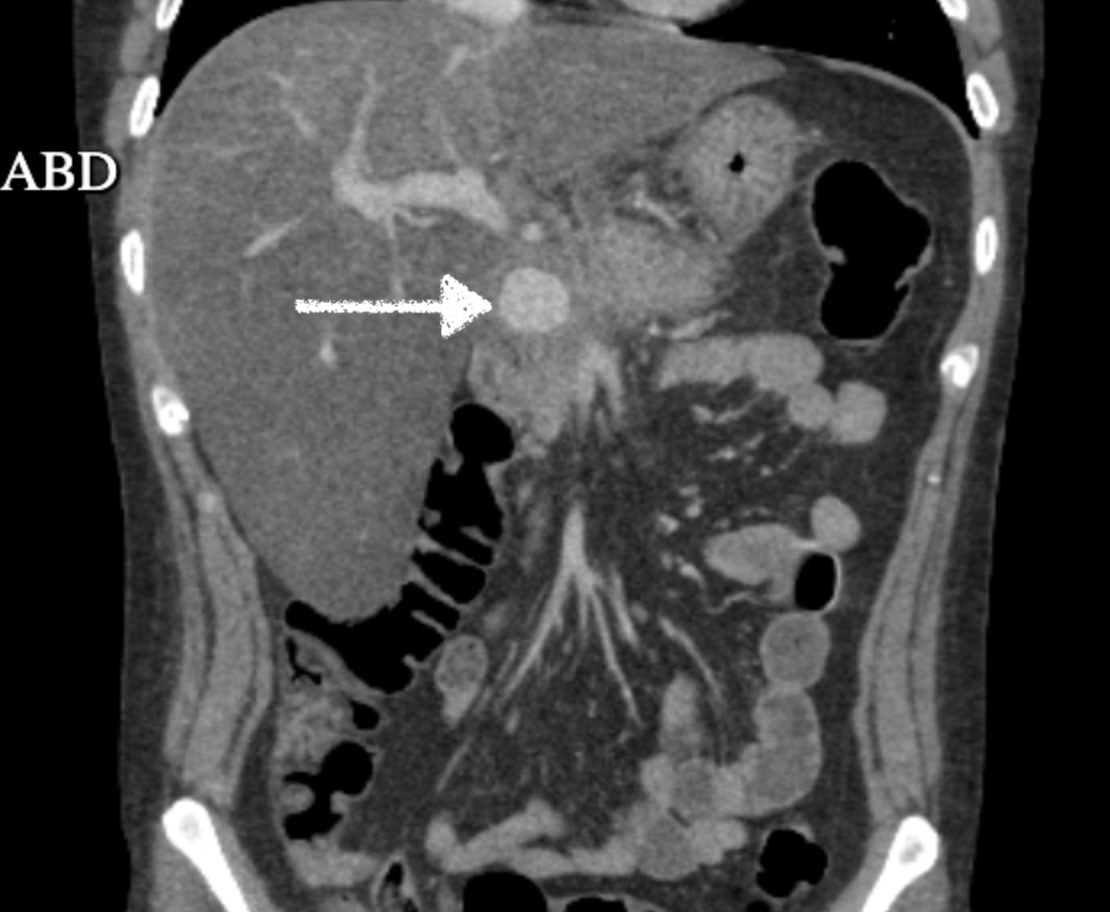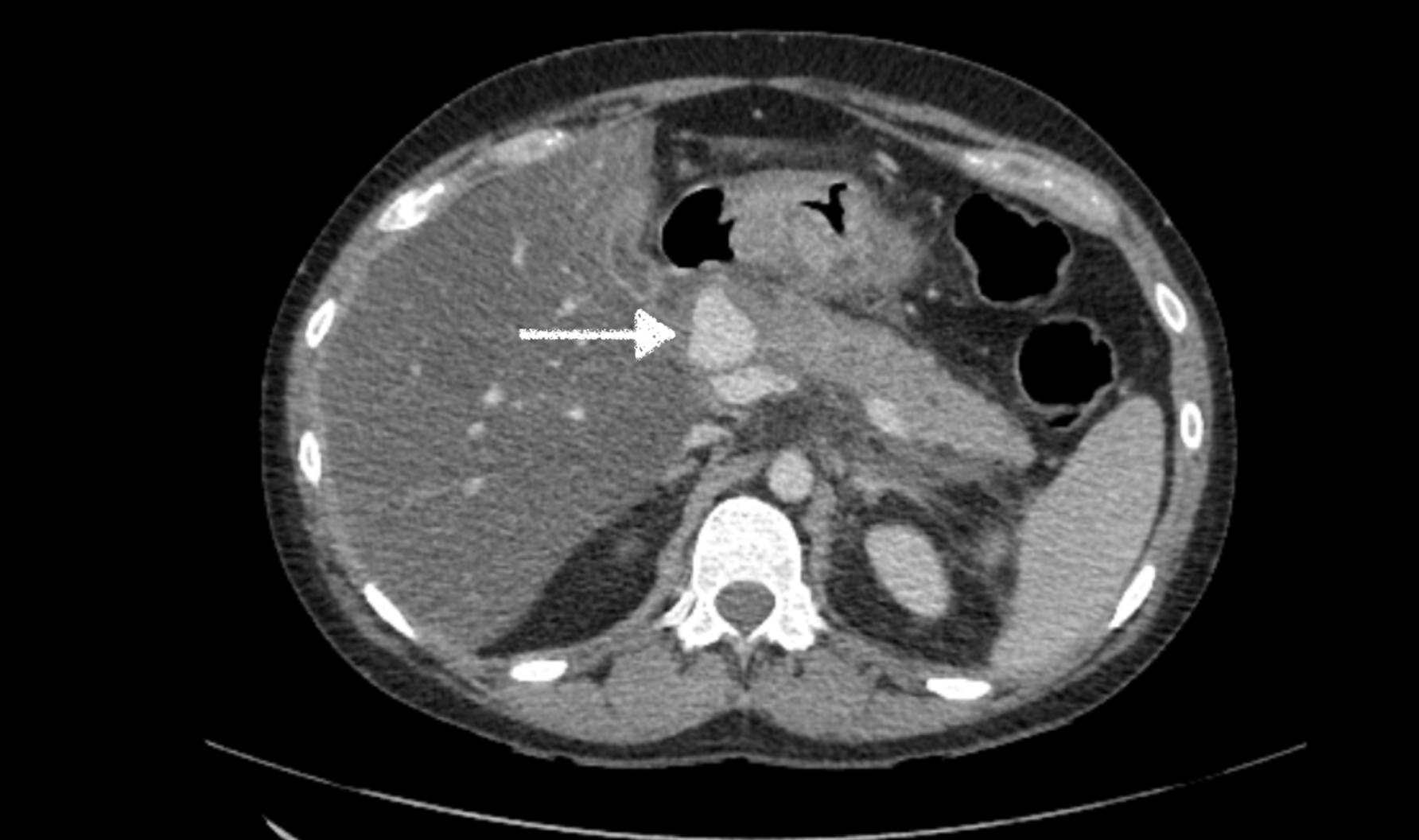Tuesday Poster Session
Category: GI Bleeding
P5283 - Massive GI Bleeding Due to Rupture of Gastro-Duodenal Artery Pseudoaneurysm: A Rare Complication of Alcohol Use Disorder
Tuesday, October 28, 2025
10:30 AM - 4:00 PM PDT
Location: Exhibit Hall

Yaseen Baseer, DO
CarePoint Health
Jersey City, NJ
Presenting Author(s)
Yaseen Baseer, DO1, Meron Debesai, MD2
1CarePoint Health, Jersey City, NJ; 2Carepoint Health/ Christ Hospital, Jersey City, NJ
Introduction: A pseudoaneurysm of the gastroduodenal artery (GDA) is a rare and potentially life-threatening vascular abnormality that can arise from chronic alcohol use. Chronic pancreatitis from prolonged alcohol abuse results inflammation of surrounding tissues which leads to erosion of the nearby arterial vessels leading to the formation of a pseudoaneurysm. The GDA is particularly susceptible to rupture and hemorrhage due to its close anatomical relationship with the pancreas and duodenum, especially in cases of recurrent alcohol use. When a pseudoaneurysm ruptures, it can bleed directly into the gastrointestinal lumen. If the volume of bleeding is extremely high and rapid, blood may not have time to be digested, allowing it to pass quickly through the small and large intestines and manifesting as bright red blood per rectum.
Case Description/
Methods: This is a case of a 37 year old male with history of alcohol use up to 5 shots of liquor daily over the last year who presented to the hospital with complaints of intermittent epigastric pain associated with bright red blood in the stool. He also reported decreased appetite and 10 pound weight loss over the last year. He denied any prior NSAID or blood thinner use. CT with IV contrast showed severe esophageal thickening, azygous vein thrombosis and GDA pseudoaneurysm. The hospital course was complicated by acute anemia due to significant rectal bleeding requiring blood transfusion support. The patient was not deemed a candidate for anticoagulation to treat the azygous vein thrombosis due to the active rectal bleeding. The source of the rectal bleeding was determined to be the GDA pseudoaneurysm which lies close to the duodenum and pancreas. Given the acute deterioration of the patient’s clinical status, he was transferred to a higher acuity hospital with vascular surgery services where he successfully received embolization and coil placement of the GDA pseudoaneurysm.
Discussion: This case highlights a rare presentation of alcohol use disorder that resulted in GDA pseudoaneurysm and subsequent massive gastrointestinal bleeding that required urgent intervention. This scenario is more likely in cases of aneurysmal rupture into the duodenum or pancreatic ducts, leading to severe bleeding that overwhelms normal digestive transit. Rectal bleeding can be a rare presentation of a proximal vascular catastrophe such as a ruptured GDA aneurysm underscoring the importance of considering upper GI sources even when bleeding appears to be from the lower GI tract.

Figure: Pseudoaneurysm of the gastroduodenal artery

Figure: Pseudoaneurysm of the gastroduodenal artery
Disclosures:
Yaseen Baseer indicated no relevant financial relationships.
Meron Debesai indicated no relevant financial relationships.
Yaseen Baseer, DO1, Meron Debesai, MD2. P5283 - Massive GI Bleeding Due to Rupture of Gastro-Duodenal Artery Pseudoaneurysm: A Rare Complication of Alcohol Use Disorder, ACG 2025 Annual Scientific Meeting Abstracts. Phoenix, AZ: American College of Gastroenterology.
1CarePoint Health, Jersey City, NJ; 2Carepoint Health/ Christ Hospital, Jersey City, NJ
Introduction: A pseudoaneurysm of the gastroduodenal artery (GDA) is a rare and potentially life-threatening vascular abnormality that can arise from chronic alcohol use. Chronic pancreatitis from prolonged alcohol abuse results inflammation of surrounding tissues which leads to erosion of the nearby arterial vessels leading to the formation of a pseudoaneurysm. The GDA is particularly susceptible to rupture and hemorrhage due to its close anatomical relationship with the pancreas and duodenum, especially in cases of recurrent alcohol use. When a pseudoaneurysm ruptures, it can bleed directly into the gastrointestinal lumen. If the volume of bleeding is extremely high and rapid, blood may not have time to be digested, allowing it to pass quickly through the small and large intestines and manifesting as bright red blood per rectum.
Case Description/
Methods: This is a case of a 37 year old male with history of alcohol use up to 5 shots of liquor daily over the last year who presented to the hospital with complaints of intermittent epigastric pain associated with bright red blood in the stool. He also reported decreased appetite and 10 pound weight loss over the last year. He denied any prior NSAID or blood thinner use. CT with IV contrast showed severe esophageal thickening, azygous vein thrombosis and GDA pseudoaneurysm. The hospital course was complicated by acute anemia due to significant rectal bleeding requiring blood transfusion support. The patient was not deemed a candidate for anticoagulation to treat the azygous vein thrombosis due to the active rectal bleeding. The source of the rectal bleeding was determined to be the GDA pseudoaneurysm which lies close to the duodenum and pancreas. Given the acute deterioration of the patient’s clinical status, he was transferred to a higher acuity hospital with vascular surgery services where he successfully received embolization and coil placement of the GDA pseudoaneurysm.
Discussion: This case highlights a rare presentation of alcohol use disorder that resulted in GDA pseudoaneurysm and subsequent massive gastrointestinal bleeding that required urgent intervention. This scenario is more likely in cases of aneurysmal rupture into the duodenum or pancreatic ducts, leading to severe bleeding that overwhelms normal digestive transit. Rectal bleeding can be a rare presentation of a proximal vascular catastrophe such as a ruptured GDA aneurysm underscoring the importance of considering upper GI sources even when bleeding appears to be from the lower GI tract.

Figure: Pseudoaneurysm of the gastroduodenal artery

Figure: Pseudoaneurysm of the gastroduodenal artery
Disclosures:
Yaseen Baseer indicated no relevant financial relationships.
Meron Debesai indicated no relevant financial relationships.
Yaseen Baseer, DO1, Meron Debesai, MD2. P5283 - Massive GI Bleeding Due to Rupture of Gastro-Duodenal Artery Pseudoaneurysm: A Rare Complication of Alcohol Use Disorder, ACG 2025 Annual Scientific Meeting Abstracts. Phoenix, AZ: American College of Gastroenterology.
